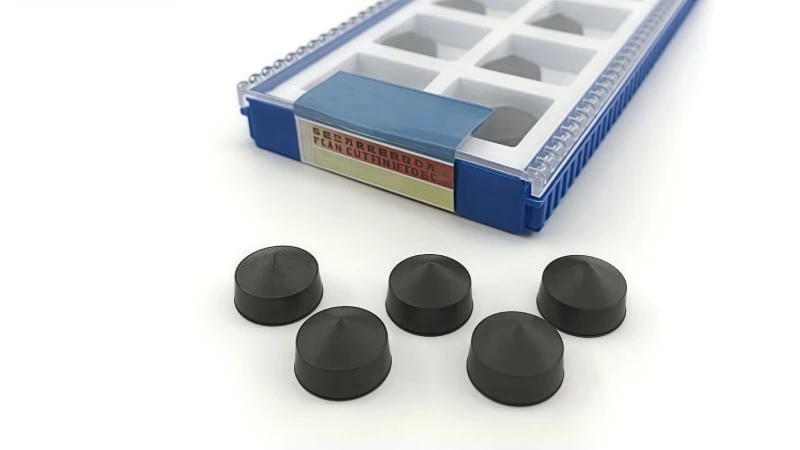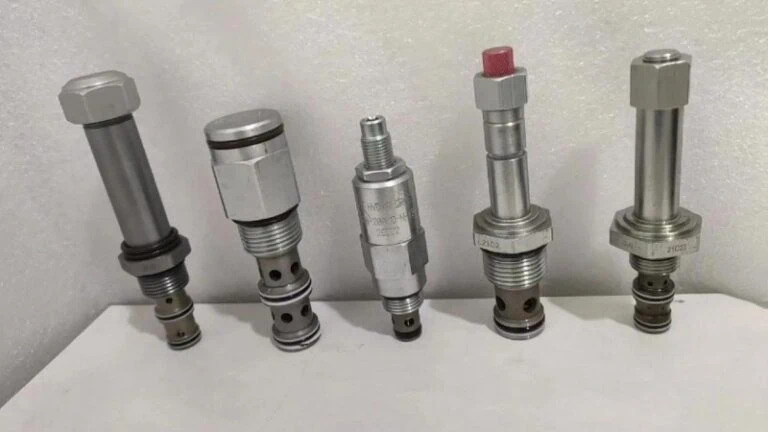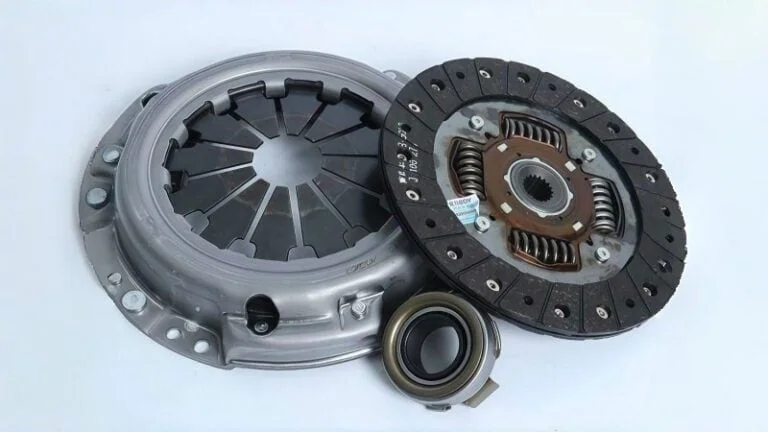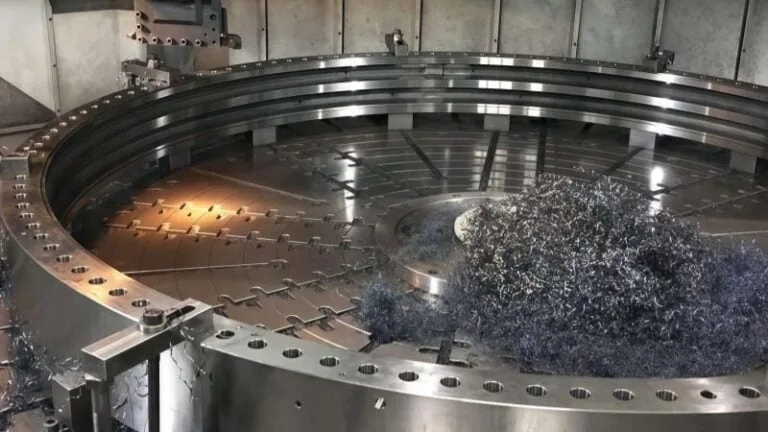-
Whatsapp: +86 13526572721
-
Email: info@zydiamondtools.com
-
Address: AUX Industrial Park, Zhengzhou City, Henan Province, China
-
Whatsapp: +86 13526572721
-
Email: info@zydiamondtools.com
-
Address: AUX Industrial Park, Zhengzhou City, Henan Province, China

Solid vs. Tipped CBN Inserts: Which Is the Right Choice for Your Machining Application?

When it comes to high-performance machining with advanced materials, how do you decide between using a solid CBN insert versus a tipped one?
The choice between solid and tipped CBN inserts hinges on the specific demands of your machining application, balancing extreme durability against cost-efficiency. Solid CBN inserts are the definitive choice for demanding, high-impact operations like heavy roughing and interrupted cutting where process security is paramount. In contrast, tipped CBN inserts are the more economical and ideal solution for stable, high-precision tasks such as finishing and continuous machining.
How Do Their Core Structures Affect Performance?
When choosing a cutting tool, how does its basic physical design—whether it’s a solid block or a tipped piece—actually change how it performs on the job?
The core structure of a CBN insert is the primary factor driving its performance. A solid CBN insert, made from a single, uniform piece of material, offers maximum structural integrity, heat resistance, and toughness, making it superior for demanding, high-impact operations. In contrast, a tipped CBN insert, which has a small CBN cutting edge brazed onto a tougher carbide base, provides a cost-effective solution but introduces a potential weak point at the brazed joint, limiting its use in high-stress applications.
Structural Integrity: Solid Monoblock vs. Brazed Tip
At the heart of the performance difference is how each insert is built.
A solid CBN insert is like a high-performance component milled from a single, solid billet of forged steel. It has no joints, no seams, and no weak points. Its structure is completely uniform, or monolithic. This single-piece design ensures that any force or vibration from the cutting process is distributed evenly throughout the entire insert. Consequently, it has exceptional strength and rigidity, making it highly resistant to bending or breaking under heavy loads.
In contrast, a tipped CBN insert is a composite tool. It combines two different materials to balance cost and performance. A small, super-hard CBN tip is attached to a less expensive but very tough tungsten carbide1 base. This connection is made through a process called brazing, which uses a filler metal to join the two pieces.
However, this brazed joint introduces a boundary between two materials with different properties. Under extreme stress, such as in an interrupted cut2 where the tool repeatedly impacts the workpiece, this joint can become the first point of failure.
| Feature | Solid CBN Insert | Tipped CBN Insert |
|---|---|---|
| Construction | Single, uniform piece (Monolithic) | CBN tip brazed onto a carbide base |
| Key Strength | Maximum rigidity and uniform strength | Cost-effective design |
| Weakness | Higher material cost | The brazed joint is a potential failure point |
Heat Resistance and Thermal Conductivity
In machining, heat is the enemy of tool life. The ability of an insert to manage heat is therefore critical to its performance and longevity.
The solid CBN insert excels at this. Because it’s made of one continuous material, it has excellent thermal conductivity3. It acts like a large heat sink, rapidly pulling heat away from the cutting edge and distributing it throughout the body of the insert. This prevents heat from concentrating at the tip, which can cause the material to soften and wear out quickly. This superior heat management is why solid CBN inserts can often be run at significantly higher cutting speeds and feeds4, increasing productivity.
On the other hand, the tipped insert’s composite structure creates a thermal barrier. The brazed joint between the CBN and carbide does not transfer heat as efficiently. As a result, heat can become concentrated in the small CBN tip, raising its temperature to critical levels much faster. This thermal buildup is a primary reason tipped inserts are generally not recommended for the most aggressive cutting operations where extreme heat is generated.
For instance, in a dry machining application on hardened D2 tool steel (62 HRC), a solid CBN insert might effectively operate at surface speeds of 150 m/min. A tipped insert, due to poorer heat dissipation, might see its performance degrade rapidly above 110 m/min under the same conditions.
Toughness and Durability Under Stress
While both inserts are extremely hard, their toughness—the ability to resist chipping and fracturing—is very different, especially under stress.
Solid CBN showcases its superior durability in applications with high impact forces. Imagine machining a part with holes or keyways. Each time the cutting edge enters and exits the material, it experiences a shock load. The solid insert’s uniform structure absorbs these impacts without a single weak point to exploit. This makes it the clear choice for:
- Interrupted Cutting: Machining splines, gears, or parts with holes.
- Heavy Roughing: Taking deep cuts to remove large amounts of material quickly.
- Inconsistent Surfaces: Cutting on cast or forged parts that have a rough, uneven outer layer.
Tipped CBN inserts, while durable, are more vulnerable to these same impact forces. The shock and vibration can cause microscopic cracks to form in or around the brazed joint, eventually leading to the tip breaking off completely. This does not mean they are not durable; rather, their durability is best utilized in stable, predictable conditions. They perform exceptionally well in:
- Finishing Operations: Taking light, final cuts to achieve a smooth surface.
- Continuous Cutting: Machining smooth, uninterrupted surfaces where the tool stays engaged with the workpiece.

What Are the Ideal Machining Scenarios for Each Insert?
So, in the real world of a machine shop, when exactly should you reach for a solid insert over a tipped one?
The ideal scenario depends entirely on the job’s demands for toughness versus precision. Use a solid CBN insert for aggressive, high-impact applications like heavy roughing and interrupted cutting where maximum durability is essential. In contrast, choose a tipped CBN insert for stable, high-precision tasks such as finishing and continuous machining where cost-efficiency and fine surface quality are the primary goals.
Solid CBN: The Solution for Heavy-Duty & Interrupted Cutting
Think of solid CBN inserts5 as the heavy-duty off-road tires of the machining world. They are built for the toughest, most punishing conditions where weaker tools would fail. Their monolithic structure gives them the strength to handle extreme forces and repeated impacts without fracturing.
For this reason, solid CBN is the undisputed champion in a few key scenarios:
- Heavy Roughing: When you need to remove a large amount of material from a very hard workpiece, you need a tool that can take a deep cut without breaking. Solid inserts can handle the high pressure and heat generated during aggressive roughing of materials like hardened steels or high-chrome irons.
- Interrupted Cutting: This is perhaps the most demanding application. Imagine machining a part with keyways, splines, or holes. The cutting edge is constantly slamming into the material and then exiting, creating a rapid-fire series of impacts. This is like a hammer blow to the tool. A solid insert’s uniform strength absorbs these shocks, whereas a tipped insert’s brazed joint would likely fail under such repeated stress.
- Removing Scale or Forged Skin: The outer layer of a cast or forged part is often rough, uneven, and full of impurities. Cutting through this “skin” is unpredictable and tough on the tool. The superior toughness of a solid CBN insert allows it to power through these inconsistencies without chipping.
Industry Case Study: An automotive supplier was milling the faces of hardened steel (60 HRC) transmission gears. The operation was an interrupted cut due to the gear teeth. They found that tipped CBN inserts were failing prematurely, often lasting for only 50 parts before the tip fractured. By switching to solid CBN inserts, they successfully increased tool life to an average of 120 parts per edge, more than doubling their productivity and reducing machine downtime.
Tipped CBN: The Choice for Finishing & Continuous Machining
If solid CBN is for off-roading, then tipped CBN is the high-performance tire for a smooth racetrack. It’s designed for speed, precision, and efficiency in stable, predictable environments. Its primary advantage is providing the incredible hardness of CBN exactly where it’s needed—at the cutting edge—without the high cost of a full solid insert.
Tipped CBN inserts6 are the perfect, cost-effective choice for these situations:
- Finishing Operations: When you’re taking a final, light cut to achieve a mirror-like surface finish and tight dimensional accuracy, a tipped insert performs beautifully. The cut is smooth and generates less stress, posing no threat to the brazed joint.
- Continuous Machining: This involves cutting a long, uninterrupted surface, like turning the face of a brake disc or the length of a hydraulic shaft. The cutting force is constant and stable, which is the ideal operating condition for a tipped insert. There are no shocks or impacts to compromise its structural integrity.
- High-Volume, Low-Stress Applications: For automated production lines where thousands of identical finishing passes are made, the lower cost of tipped inserts provides a significant economic advantage without sacrificing performance.
Application-Specific Guidance: Hard Turning vs. Cast Iron Milling
While the general rules of “heavy vs. light” work well, let’s look at two common, specific applications to see how the choice plays out.
Hard Turning Success
Hard turning7 is the process of machining steel after it has been heat-treated (typically above 45 HRC). It’s a precise process meant to replace grinding.
- For finishing passes on a hardened shaft, where the cut is continuous and light, a tipped CBN insert is almost always the right choice. It provides the required hardness for an excellent surface finish at a much lower cost.
- If the hardened part has interruptions, like a cross-drilled hole, you must switch to a solid CBN insert. The impact of the tool edge crossing the hole would almost certainly break a tipped insert.
Milling High-Strength Cast Iron
Milling high-strength cast iron8, especially tough grades like ductile or compacted graphite iron (CGI), can generate a lot of heat and abrasive wear.
- For face milling a large, flat engine block deck (a continuous cut), a tipped CBN insert is highly efficient and cost-effective.
- For rough milling a raw casting with an uneven, sandy surface, a solid CBN insert is a safer and more reliable option, as it can better withstand the unpredictable loads and abrasive skin.
It’s important to remember that cast iron grades can vary significantly in their properties. For optimal results, it’s always a good practice to consult your tooling supplier’s recommendations for the specific grade of material you are machining.

Which Insert Provides the Better Return on Investment?
Beyond pure performance, which of these inserts is actually better for your shop’s bottom line?
While tipped CBN inserts have a lower upfront purchase price, solid CBN inserts frequently deliver a superior long-term return on investment (ROI)9 in demanding jobs. This is because their extended tool life drastically reduces the cost-per-part and minimizes expensive production downtime caused by premature tool failures.
Comparing the Upfront Purchase Price
The first thing you’ll notice when comparing these two tools is the price tag. There’s no getting around it: a solid CBN insert costs significantly more than a tipped CBN insert.
Why the big difference? You’re paying for a tool made entirely of a highly advanced, expensive material. A solid insert is 100% polycrystalline cubic boron nitride10. In contrast, a tipped insert is mostly tungsten carbide, which is a much less expensive material, with only a small, crucial piece of CBN brazed to the edge.
- Tipped CBN: Lower initial investment, making it attractive for jobs with tight budgets or for smaller production runs.
- Solid CBN: Higher initial investment, which requires a careful calculation to justify the expense.
The upfront price is only one part of the financial story. However, it’s important to note that pricing can vary based on the manufacturer, specific CBN grade, and any applied coatings, so always get current quotes from your supplier.
Calculating Long-Term Value: Tool Life and Cost-Per-Part
The true financial measure of a cutting tool isn’t its purchase price; it’s the cost-per-part. This simple calculation reveals the long-term value and is the key to understanding ROI in a production environment.
The formula is straightforward:
Cost-Per-Part = (Insert Price) / (Number of Parts Machined Per Edge)
Here’s where solid CBN inserts often prove their worth. Because they last much longer in tough applications, they can produce more parts per cutting edge, driving down the cost-per-part despite their higher initial price.
Let’s look at a real-world scenario. A shop needs to machine 5,000 hardened steel injector bodies.
| Metric | Tipped CBN Insert | Solid CBN Insert |
|---|---|---|
| Insert Price | $60 | $150 |
| Parts Per Edge | 80 | 250 |
| Calculated Cost-Per-Part | $0.75 | $0.60 |
In this example, despite the solid insert costing 2.5 times more upfront, it delivers a 20% lower cost-per-part. When you multiply that savings by 5,000 units, the choice of the solid insert results in a total savings of $750 on that job alone. This demonstrates that focusing only on the purchase price can be a costly mistake.
The Hidden Costs of Tool Failure and Downtime
The cost-per-part calculation is powerful, but it still doesn’t tell the whole story. The biggest financial drains in a machine shop are often the hidden costs associated with tool failure, and this is where the reliability of a solid insert provides immense value.
What happens when an insert fails unexpectedly mid-cut?
- Machine Downtime: The most immediate cost. If your CNC machine costs $100 per hour to run, and it takes an operator 15 minutes to stop the machine, diagnose the problem, find a new tool, and reset the operation, you’ve just lost $25 in productivity. These stops add up quickly.
- Scrapped Parts: When an insert breaks, it almost always ruins the workpiece. You not only lose the revenue from that part but also have to absorb the cost of the raw material and the machine time already invested in it.
- Damage to Equipment: In a catastrophic failure, a broken insert can damage the tool holder or even the machine spindle, leading to expensive repairs and even longer downtime.
Because solid CBN inserts are structurally superior and more reliable in demanding applications, they fail far less frequently. This predictability is a massive financial benefit. You can run machines with more confidence, plan tool changes predictably, and even run ‘lights-out’ automated shifts, knowing the tool is far less likely to cause a costly stoppage. The ROI of a solid insert isn’t just in making more parts; it’s in preventing the expensive problems that bring production to a halt.

Making the Definitive Choice: A Practical Guide
After weighing the performance, applications, and costs, how do you put it all together to make the right call for your specific job?
To make the definitive choice, you must evaluate your application’s specific demands, primarily focusing on the trade-off between extreme durability and cost-efficiency. For a quick evaluation, use a decision-making checklist. If your job involves high-stress conditions like heavy or interrupted cuts where failure is not an option, invest in solid CBN. Conversely, if your operation is stable and continuous, and optimizing cost-per-part is the priority, the logical choice is tipped CBN.
A Quick Decision-Making Checklist
Sometimes, the easiest way to decide is to see the choices side-by-side. Use this table as a quick reference guide. Find your primary machining factor in the left column to see which insert is the recommended choice.
| Decision Factor | Lean Towards Solid CBN | Lean Towards Tipped CBN |
|---|---|---|
| Type of Cut | Interrupted, heavy roughing | Continuous, light finishing |
| Workpiece Material | Extremely hard (>60 HRC), inconsistent surfaces | Moderately hard (45-60 HRC), clean surfaces |
| Depth of Cut (DOC) | Deep (heavy material removal) | Shallow (fine surface finishing) |
| Machine Rigidity | Older or less rigid machines | Modern, highly stable CNC machines |
| Primary Goal | Maximum reliability and process security | Lowest possible cost-per-part |
| Automation Level | Unattended or “lights-out” machining | Fully attended operations |
Key Questions to Evaluate Your Specific Needs
Before you place an order, take a moment to answer these critical questions about your specific operation. Your answers will point you directly to the most logical and profitable choice.
- What is the nature of the cut? Is it a smooth, continuous pass, or will the tool be repeatedly impacting the workpiece? This is the single most important factor.
- What is the true cost of a tool failure? Don’t just think about the price of the insert. Consider the cost of a scrapped part, the value of machine downtime, and the operator’s time. If these costs are high, the reliability of a solid insert is a valuable insurance policy.
- Is my primary goal process security or lowest tool cost? Are you in a high-stakes situation where a single tool failure could scrap a very expensive part? Or are you in a high-volume production where saving a few cents on every part adds up to a significant amount?
- How stable and rigid is my setup? A brand-new, high-end CNC machine can provide the stability needed for a tipped insert to perform well. An older machine with more vibration might benefit from the inherent toughness of a solid insert to compensate.
Final Recommendations: When to Choose Solid vs. Tipped
Let’s make this as simple as possible. By now, you should have a clear idea of which tool fits your needs. Here is the final takeaway.
You should choose a SOLID CBN insert when:
Your application involves heavy roughing, interrupted cuts, or machining unpredictable surfaces. Your top priority is maximum toughness and process reliability, and you are willing to make a higher upfront investment to prevent costly downtime and tool failure.
You should choose a TIPPED CBN insert when:
Your application involves stable finishing passes or continuous cutting on clean material. Your top priority is achieving the lowest possible cost-per-part in a predictable, high-volume environment where the risk of catastrophic tool failure is low.
Conclusion
Ultimately, both solid and tipped CBN inserts are exceptional tools that excel in their designed roles. The key to success is not in viewing one as universally “better,” but in understanding your specific application’s unique demands. By analyzing the nature of your cut, your financial priorities, and your tolerance for risk, you can confidently select the right insert that will not only perform well but will also maximize your shop’s productivity and profitability. Choosing correctly transforms a simple cutting tool into a strategic investment.
References
- Tungsten Carbide1 – Wikipedia entry explaining the properties and applications of this hard, durable composite material used as the base for tipped inserts.
- Interrupted Cut2 – A detailed guide from ZYDiamondTools on how PCBN tools solve the challenges of interrupted cutting.
- Thermal Conductivity3 – An educational resource from Thermtest explaining the fundamental concept of thermal conductivity in materials.
- Cutting Speeds and Feeds4 – A practical calculator from ZYDiamondTools to help determine the optimal parameters for your machining operations.
- Solid CBN Inserts5 – Product page for solid CBN inserts designed for heavy-duty and hard machining applications.
- Tipped CBN Inserts6 – Product page for standard CBN and PCBN inserts suitable for a variety of hard material machining tasks.
- Hard Turning7 – A comprehensive ZYDiamondTools article on maximizing success with CBN inserts in hard turning applications.
- Milling High-Strength Cast Iron8 – A guide from ZYDiamondTools on the best practices for machining hard cast iron with PCBN tools.
- Return on Investment (ROI)9 – A ZYDiamondTools guide explaining Total Cost of Ownership (TCO), a key concept for calculating the true ROI of cutting tools.
- Cubic Boron Nitride10 – Wikipedia article detailing the properties of cubic boron nitride (CBN), the superhard material used in these inserts.




